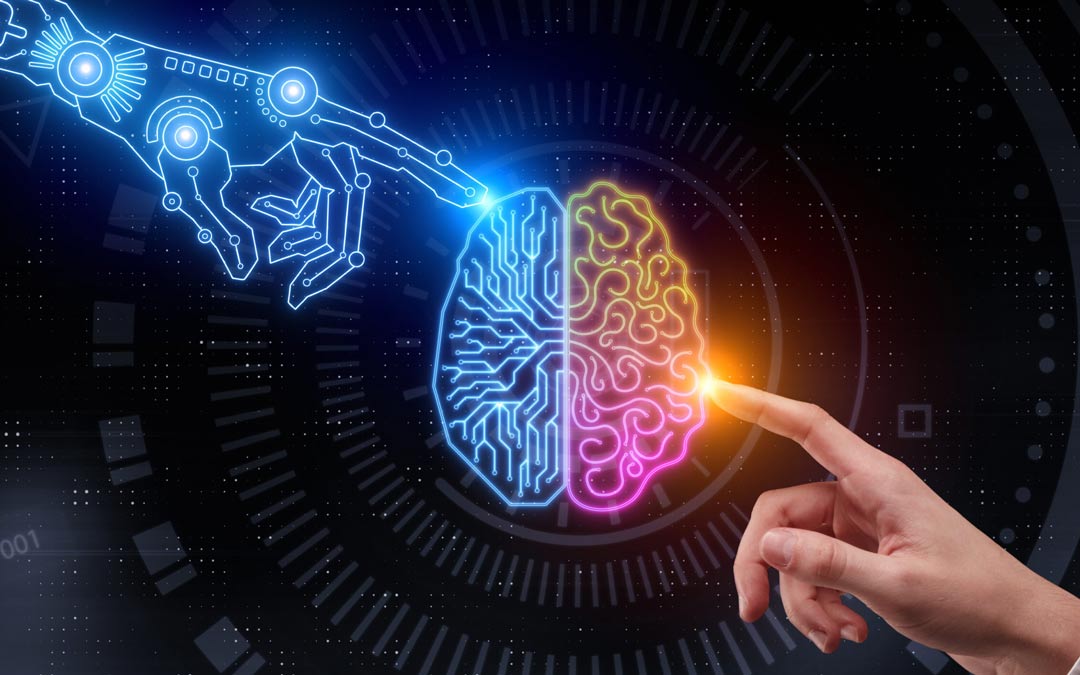
For decades, the narrative surrounding artificial intelligence (AI) has been marked by great controversy and debate. In pop culture, for instance, great portrayal of AI turning against its creators has been put to screen in the form of stories that encapsulate a deep-seated anxiety about AI surpassing human intelligence and potentially turning against humanity. This dichotomy of Humans versus machines has indeed fueled countless debates, research agendas and ethical discussions.
However, while the world has been engrossed in this “either… Or…” debate, a revolutionary idea has been brewing within scientific circles: why not combine the best of both worlds? Computer and brain…while the concept of a symbiosis between the two isn’t new, the idea of “Hybrid Intelligence, a merging of brain organoids with a computer certainly is a new angle.
The underlying principle is utilizing lab-grown mini-brains, known as brain organoids and integrating them with computer chips. This is based on the fact that the brain communicates through electrical signals, similar to how computers operate thus allowing communication between the two, i.e. The cells can receive information from a computer, understand it and even talk back. The first such mini brain grown in a test tube in 2013 sparked significant research into the potential of these organoids as it was discovered they could develop into structures that resemble simplified versions of the human brain.
Researchers then spotted an opportunity to study brain development and disease, and now they are exploring the possibility of hybrid intelligence, a combination of part brain and electronic elements to leverage powers from the two…simply out, biocomputers
This was first demonstrated in what was named the DishBrain project at Monash University in Australia, where about 800,000 brain cells were grown on a Petri dish, put into a simulated environment where they learned to play a game of pong in about five minutes.
Leading research groups have since emerged to pioneer the use of brain organoid into various aspects. For instance, Indiana University grew its organoid in a less controlled way by allowing it to self-arrange itself into what came out to be a small brain organoid ball and mounted it on a computer chip, which could send electrical signals into the organoid and also read the responses to these signals…they named it Brainoware, and was capable of machine learning at far superior speeds, accuracy and efficiency compared to today’s AI models, as shown by the New Atlas website.
Today, hybrid intelligence is at the forefront of neuroscience, bioengineering and artificial intelligence. Researchers are developing robotic systems where brain organoids serve as a basic control center with the capacity to respond to environmental stimuli. While this work is still very young in development, it provides a tantalizing glimpse into the potential of hybrid intelligence…and the possible horrors. I for one would be skeptical of a robot with a human brain in there.
While the original aim for creating brain organoids was to study and research the brain and its neuroscience, the concept has shown great potential in computing. Brain organoids learn fast, way faster than modern AI models, consume very little power and have the ability to learn by growing and reorganizing themselves continuously the way our brains do. They learn and adapt in ways current Artificial intelligence cannot which could transform the industry.
However, they do have their limitations. For example, much like our human brains, these organoids also need sustenance; they need to be fed for them to develop and function. Not to mention, ensuring a stable and Longterm integration between the organoids and electrical components is complex. Creating an effective interface for seamless communication between neurons and electronic systems is still a developing area.
In addition, the brain organoids are still a simplified version of the human brain, lacking the full complexity and functionality of a mature brain.
Looking ahead, the future of hybrid intelligence is one of immense applications and study before it can be utilized the way modern AI is. That said, it’s possible applications are quite significant, from robotics to brain health, and enhanced computing not to mention the advancement it can lead in neuroscience and medicine. Understanding how these organoids interface could give useful insights into how the brain functions, potentially leading to breakthroughs in understanding and treating neurological disorders such as epilepsy. Alzheimer’s and Parkinson’s diseases.
However, I do believe that the development of a hybrid intelligence will undoubtedly raise some ethical concerns. What are the moral implications of creating systems that combine living neurons with AI? How do we ensure such technology is used responsibly and for the benefit of humanity? Will the robots still be robots if they have actual brains with the capacity to understand the world the way we humans do?
These, are some of the questions I ask myself as I read into the research papers on the topic. Hopefully, I will find answers and share them with you too.